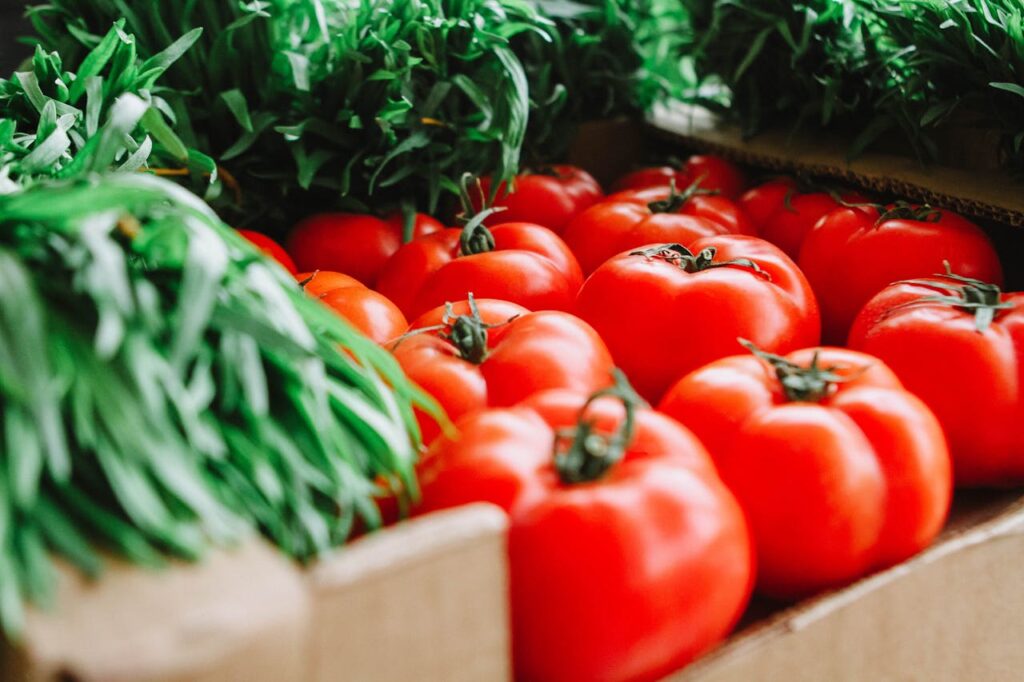
Explore & Play
Discover interesting topics and solve the accompanying crossword puzzle.
Vegetable Crossword | Guide to Greens
Table of Contents
Welcome to our exploration of vegetables! To get started, you can first dive into the Vegetable crossword puzzle to test your knowledge and see how many of these nutritious foods you can identify. If you’re not yet familiar with the variety of vegetables featured, feel free to read through our comprehensive article on vegetables first. Once you’re up to speed, come back to the crossword for an extra challenge. Enjoy your journey through the world of vegetables!
Vegetable Crossword
You can either fill in the crossword puzzle directly on this page or click the button in the bottom right corner to print it for free.

Vegetable Encyclopedia: From Carrots to Watercress
Welcome to the ultimate guide on vegetables, where we dive into the world of these essential plant-based foods—from the humble carrot to the vibrant watercress. In this comprehensive encyclopedia, we’ll explore the myriad vegetables that make up the cornerstone of healthy eating, offering insights into their types, uses, and benefits. Along the way, we’ll also take a peek at our special vegetable crossword puzzle, which highlights many of these intriguing varieties.
1. Root Vegetables
Root vegetables are the backbone of many hearty dishes, offering robust flavors and essential nutrients. These vegetables grow underground and store energy in their roots, making them a vital part of our diet.
1.1. Carrot
Carrots, with their vibrant orange hue, are not just visually appealing but also packed with beta-carotene, which the body converts into vitamin A. Often used in salads, soups, and as a crunchy snack, carrots are versatile and nutritious. Their natural sweetness and crisp texture make them a favorite in both raw and cooked dishes.
1.2. Potato
Potatoes are a staple in many households due to their versatility. They come in various types—russet, red, and fingerling, to name a few. Potatoes can be mashed, baked, fried, or roasted, and are rich in carbohydrates, vitamin C, and potassium. They provide a comforting, filling base for countless recipes.
1.3. Beetroot
Beetroot is renowned for its deep red color and earthy flavor. This root vegetable is a nutritional powerhouse, offering high levels of fiber, folate, and antioxidants. Beetroots can be roasted, pickled, or used in salads, providing a sweet and earthy touch to dishes.
1.4. Radish
Radishes are crisp and have a peppery bite that adds a refreshing contrast to salads and sandwiches. They are low in calories and rich in vitamin C, making them a healthy choice for adding crunch and flavor to your meals.
1.5. Parsnip
Parsnips, closely related to carrots, have a sweeter and nuttier flavor when cooked. They are excellent roasted or used in soups and stews, providing a subtle sweetness and creamy texture that enhances many dishes.
2. Leafy Greens
Leafy greens are packed with vitamins and minerals, making them a staple in many healthy diets. These vegetables offer a range of flavors, from mild to robust, and can be used in various culinary applications.
2.1. Spinach
Spinach is a nutritional powerhouse, rich in iron, vitamins A and C, and antioxidants. It can be enjoyed raw in salads, sautéed as a side dish, or blended into smoothies. Its mild flavor and tender texture make it an easy addition to many recipes.
2.2. Lettuce
Lettuce comes in many varieties, including romaine, iceberg, and arugula. Each type offers a different texture and flavor profile. Lettuce is commonly used as a base for salads and sandwiches, providing a crisp and refreshing element to meals.
2.3. Kale
Kale is celebrated for its dense nutritional profile, offering high levels of vitamins A, C, and K. Its hearty leaves are ideal for salads, soups, and even as a crispy snack when baked into chips. The slightly bitter taste of kale can be balanced with various dressings and flavors.
2.4. Swiss Chard
Swiss chard stands out with its colorful stems and dark green leaves. It has a slightly earthy flavor and is rich in vitamins A and K. Swiss chard can be sautéed, added to soups, or used as a bed for other dishes, making it a versatile green in the kitchen.
2.5. Arugula
Arugula adds a peppery kick to salads and sandwiches. This leafy green is rich in calcium, iron, and vitamins A and C. Its bold flavor pairs well with fruits, cheeses, and light vinaigrettes, enhancing the overall taste of dishes.
3. Cruciferous Vegetables
Cruciferous vegetables are known for their cancer-fighting properties and versatile uses in the kitchen. These vegetables are part of the Brassicaceae family and are packed with nutrients.
3.1. Broccoli
Broccoli is a well-known cruciferous vegetable that is rich in vitamins C and K, as well as fiber. It can be steamed, roasted, or added to stir-fries, offering a crunchy texture and slightly bitter flavor. Its health benefits make it a valuable addition to a balanced diet.
3.2. Cauliflower
Cauliflower is a versatile vegetable that can be used as a low-carb substitute for grains and legumes. Its mild flavor makes it suitable for a variety of dishes, from roasted florets to creamy soups. Cauliflower is high in fiber and vitamin C, making it a nutritious choice.
3.3. Brussels Sprouts
Brussels sprouts are mini cabbages with a strong flavor and crunchy texture. They are rich in vitamins C and K, as well as antioxidants. Roasting or sautéing Brussels sprouts helps to mellow their bitterness and enhance their natural sweetness.
3.4. Cabbage
Cabbage comes in several varieties, including green, red, and Napa. It is a versatile vegetable that can be used in salads, soups, and stir-fries. Cabbage is high in fiber and vitamin C, making it a nutritious and economical choice.
3.5. Kohlrabi
Kohlrabi has a unique bulbous shape and a mild, sweet flavor. It can be eaten raw in salads or cooked in various dishes. This vegetable is rich in vitamin C and fiber, offering a crunchy texture that complements many recipes.
4. Gourds and Squash
Gourds and squash come in various shapes and sizes, each adding unique textures and flavors to dishes. These vegetables are often used in soups, stews, and side dishes.
4.1. Zucchini
Zucchini is a summer squash with a mild flavor and tender texture. It can be grilled, sautéed, or used in baking. Zucchini is low in calories and rich in vitamins A and C, making it a healthy and versatile ingredient.
4.2. Butternut Squash
Butternut squash has a sweet, nutty flavor and smooth texture. It is often roasted or pureed into soups. Rich in vitamins A and C, butternut squash adds a comforting sweetness to a variety of dishes.
4.3. Pumpkin
Pumpkin is a popular gourd used in both sweet and savory dishes. It can be made into pies, soups, or roasted as a side dish. Pumpkins are high in vitamins A and C and provide a sweet, earthy flavor.
4.4. Acorn Squash
Acorn squash has a mildly sweet flavor and a tender texture when cooked. It is often roasted or stuffed, making it a hearty addition to meals. Acorn squash is rich in fiber and vitamins A and C.
5. Pods and Beans
Pods and beans are protein-rich vegetables that add a delightful crunch and taste to meals. They are commonly used in various cuisines and offer a range of nutritional benefits.
5.1. Green Beans
Green beans are tender pods that are commonly used as a side dish. They are rich in vitamins A, C, and K, as well as fiber. Green beans can be steamed, sautéed, or used in casseroles.
5.2. Peas
Peas are small, round vegetables that add sweetness and texture to dishes. They are high in protein, fiber, and vitamins A and C. Peas can be used in soups, stews, or as a side dish.
5.3. Edamame
Edamame are young soybeans often served as an appetizer or snack. They are rich in protein, fiber, and essential nutrients. Edamame can be steamed, seasoned, and enjoyed on their own or added to salads and stir-fries.
6. Tubers and Bulbs
Tubers and bulbs offer a range of flavors and textures, essential for many classic and contemporary dishes. These vegetables grow underground and store energy in their edible parts.
6.1. Sweet Potato
Sweet potatoes are known for their sweet flavor and creamy texture. They are high in vitamins A and C and can be baked, mashed, or used in pies. Sweet potatoes provide a nutritious and comforting addition to many meals.
6.2. Garlic
Garlic is a pungent bulb used to enhance the flavor of a wide range of dishes. It has been associated with various health benefits, including improved heart health. Garlic can be used in cooking or eaten raw for its medicinal properties.
6.3. Leek
Leeks have a mild, onion-like flavor and are often used in soups and stews. They are high in vitamins A and C and provide a subtle depth of flavor to dishes. Leeks can be sautéed or used as a base for various recipes.
6.4. Shallots
Shallots are smaller and milder than onions, with a subtle, sweet flavor. They are often used in dressings, sauces, and gourmet dishes. Shallots offer a delicate taste and are rich in antioxidants.
6.5. Fennel
Fennel has a distinctive anise-like flavor and is used in both raw and cooked dishes. The bulb, fronds, and seeds are all edible and offer a range of culinary uses. Fennel is rich in vitamins and adds a unique flavor to meals.
7. Exotic and Specialty Vegetables
Exploring exotic and specialty vegetables can add exciting flavors and textures to your culinary repertoire. These vegetables are often less common but provide unique tastes and nutritional benefits.
7.1. Artichoke
Artichokes are edible buds with a slightly nutty and sweet flavor. They are often steamed or grilled and served with dips. Artichokes are high in antioxidants and fiber, making them a healthy and flavorful choice.
7.2. Jicama
Jicama, also known as Mexican turnip, has a crisp texture and mildly sweet flavor. It is often eaten raw in salads or as a snack. Jicama is high in fiber and vitamin C, providing a refreshing crunch.
7.3. Daikon Radish
Daikon radish is a large, mild radish often used in Asian cuisine. It can be grated, pickled, or added to soups. Daikon is low in calories and provides a subtle, crisp flavor.
7.4. Okra
Okra is a vegetable known for its unique texture and flavor. It is often used in Southern and Creole dishes, such as gumbo. Okra is rich in vitamins C and K and adds a distinctive touch to recipes.
7.5. Bamboo Shoots
Bamboo shoots are tender, young sprouts from bamboo plants used in Asian cuisine. They add a delicate crunch to dishes and are low in calories. Bamboo shoots can be stir-fried, added to soups, or used in salads.
8. Sprouts and Small Vegetables
Small vegetables and sprouts offer concentrated flavors and are perfect for garnishing or adding to salads. They are nutrient-dense and add variety to meals.
8.1. Alfalfa Sprouts
Alfalfa sprouts are tiny green shoots that add a fresh, crisp texture to sandwiches and salads. They are rich in vitamins C and K, as well as antioxidants. Alfalfa sprouts provide a healthy and crunchy addition to various dishes.
8.2. Watercress
Watercress is a peppery green often used in salads and soups. It is packed with vitamins A and C and has a slightly spicy flavor. Watercress can be added to sandwiches, salads, or used as a garnish.
8.3. Endive
Endive is a bitter leafy green that adds a unique flavor to salads and dishes. It can be used as a base for salads or as a vehicle for various fillings. Endive is rich in vitamins A and K and offers a crunchy texture.
Discover More with Our Vegetable Crossword Puzzle
From the crispy freshness of cucumbers to the hearty richness of root vegetables, the world of vegetables is diverse and full of possibilities. Our vegetable crossword puzzle features many of the vegetables we’ve discussed, providing a fun and engaging way to test your knowledge.
Dive into the crossword and see how many of these vegetables you can identify, or use it as a challenge for friends and family. Enjoy exploring the flavors and benefits of vegetables in your cooking adventures!
Share to...
I hope you enjoy the content.
Want to receive our daily crossword puzzle or article? Subscribe!
You may also be interested in
Share to…
Want to receive our daily crossword puzzle?
-
Jigsaw Puzzles
Zodiac Watercolor Rooster Puzzle: Artful Elegance 250 | 300 | 500 Pieces
kr 348,00 – kr 439,00Price range: kr 348,00 through kr 439,00 Select options This product has multiple variants. The options may be chosen on the product page -
Jigsaw Puzzles
Majestic Horse Watercolor Jigsaw Puzzle 250 | 300 | 500 Pieces
kr 348,00 – kr 439,00Price range: kr 348,00 through kr 439,00 Select options This product has multiple variants. The options may be chosen on the product page -
Jigsaw Puzzles
Enchanting Unicorn Watercolor Jigsaw Puzzle 250 | 300 | 500 Brikker
kr 348,00 – kr 439,00Price range: kr 348,00 through kr 439,00 Select options This product has multiple variants. The options may be chosen on the product page

















